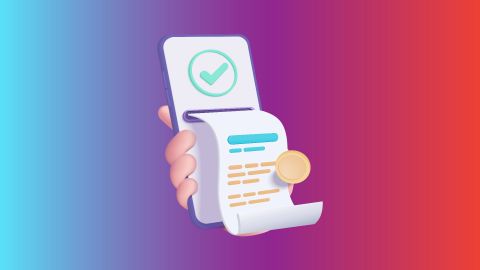Since its inception in 1997 with Coca-Cola's first SMS-based mobile payment experiment, digital wallets have dramatically transformed how people interact with financial services. They allow users to perform various transactions, including online shopping, peer-to-peer transfers, bill payments, and even cryptocurrency management, all from a single platform.
By 2022, digital wallet adoption had reached significant milestones, with approximately 45% of consumers in China using these platforms, compared to 6% in North America. The technology offers numerous advantages like instant transactions, global accessibility, and reduced physical wallet dependency.
Emerging trends in digital wallet
Digital wallets are rapidly expanding beyond traditional payment mechanisms. They now integrate loyalty programs, ticketing systems, and even government services. The trend suggests a future where these platforms become comprehensive digital ecosystems, offering seamless, multifunctional experiences for users across various sectors.Technologies shaping the future of digital wallets
| Technology | Impact |
| Blockchain | Enhanced transaction security |
| AI | Personalised financial insights |
| Biometric authentication | Advanced user verification |
| IoT | Expanded payment integration |
How digital wallets will revolutionise financial transactions
1. Eliminate physical currency dependence: Digital wallets are systematically reducing reliance on physical cash by offering comprehensive digital payment solutions. Users can now complete transactions through smartphones, eliminating the need to carry bulky wallets or paper currency. This shift is particularly prominent in urban areas with high technological adoption, where contactless payments have become the preferred method of financial exchange.
2. Enable instant global transactions: Digital wallets transcend geographical limitations by facilitating immediate cross-border financial transfers. Through advanced technologies like UPI and blockchain, users can now send and receive money internationally within seconds, bypassing traditional banking bureaucracies and reducing transaction costs and processing times.
3. Provide real-time financial tracking: Advanced digital wallet platforms integrate sophisticated tracking mechanisms that offer users comprehensive financial insights. These systems automatically categorise expenses, generate spending reports, and provide instant transaction notifications, enabling users to monitor their financial health with unprecedented transparency and precision.
4. Integrate multiple payment methods: Modern digital wallets function as versatile financial platforms, supporting various payment channels including credit/debit cards, bank transfers using UPI, cryptocurrency, and loyalty program integrations. This multi-dimensional approach provides users unparalleled flexibility in managing their financial transactions.
5. Enhance transaction security: Digital wallets incorporate advanced security protocols like biometric authentication, multi-factor verification, and end-to-end encryption. These technologies significantly reduce fraud risks, offering more robust protection compared to traditional cash transactions and providing users greater confidence in digital financial interactions.
6. Offer personalised financial experiences: Leveraging artificial intelligence and machine learning, digital wallets now deliver highly customised financial recommendations. By analysing individual spending patterns, these platforms can suggest personalised budgeting strategies, investment opportunities, and financial planning insights tailored to each user's unique economic profile.
The ongoing digital transformation continues to reshape financial interactions, making transactions more efficient, secure, and user-centric.7. Predictive spending analysis: AI algorithms analyse users' historical transaction data to forecast future spending patterns. By examining purchasing habits, income streams, and financial behaviours, these systems can predict potential expenditure trends, helping users understand and plan their financial activities more effectively.
8. Fraud detection mechanisms: Machine learning models continuously monitor transaction patterns, identifying suspicious activities in real-time. These sophisticated systems can detect anomalies by comparing current transactions against established user behaviour profiles, instantly flagging potentially fraudulent activities and preventing unauthorised financial transactions.
9. Personalised financial recommendations: Advanced AI technologies leverage individual financial data to generate tailored financial advice. These recommendations include investment suggestions, savings strategies, and personalised credit opportunities based on comprehensive analysis of users' financial health and historical transaction patterns.
10. Automated expense categorisation: AI-driven digital wallets automatically classify and organise expenses into precise categories. By utilising natural language processing and machine learning, these systems can accurately sort transactions, providing users with detailed insights into their spending habits without manual intervention.
11. Risk assessment and management: Machine learning algorithms evaluate financial risks by analysing complex datasets, including credit history, transaction patterns, and macroeconomic indicators. These systems help financial institutions and users make informed decisions by providing comprehensive risk profiles and potential financial scenarios.
12. Intelligent transaction monitoring: AI enables real-time transaction tracking and analysis, offering instant insights into financial activities. These intelligent systems can detect unusual spending patterns, provide immediate notifications, and help users maintain better financial control.
Challenges and opportunities for digital wallets
1. Data privacy concerns: As digital wallets collect extensive personal financial information, ensuring robust data protection becomes crucial. Advanced encryption technologies and strict data governance frameworks are essential to maintain user trust and comply with evolving privacy regulations.
2. Cybersecurity vulnerabilities: Digital wallets face continuous cybersecurity challenges, requiring constant technological upgrades to prevent potential breaches. Implementing multi-factor authentication, biometric verification, and advanced threat detection mechanisms are critical for maintaining system integrity.
3. Regulatory compliance: Digital wallet providers must navigate complex regulatory landscapes across different jurisdictions. Developing adaptable technological infrastructures that can quickly respond to changing legal requirements is paramount for sustainable growth.
4. Technology integration: Seamlessly integrating emerging technologies like blockchain, AI, and ultrasonic data transmission presents both challenges and opportunities for digital wallet platforms. Successful integration can significantly enhance user experience and system capabilities.
5. User trust and adoption: Building user confidence through transparent operations, robust security measures, and demonstrable value propositions is essential for widespread digital wallet adoption. Educational initiatives and user-friendly interfaces can help overcome initial technological hesitations.
6. Global financial inclusion: Digital wallets have tremendous potential to provide financial services to unbanked and underbanked populations worldwide. By offering accessible, low-cost financial tools, these platforms can democratise financial access and support economic empowerment.
The future of digital wallets lies in their ability to continuously innovate, prioritise user experience, and maintain a delicate balance between technological advancement and user trust. By 2025, digital wallet transactions are projected to exceed 9 billion, signalling a significant shift in global financial interactions.Conclusion
Digital wallets represent a revolutionary financial technology that is rapidly transforming how individuals manage, spend, and interact with money. By leveraging advanced technologies like AI, blockchain, and biometric authentication, these platforms are creating more secure, efficient, and personalised financial experiences.




